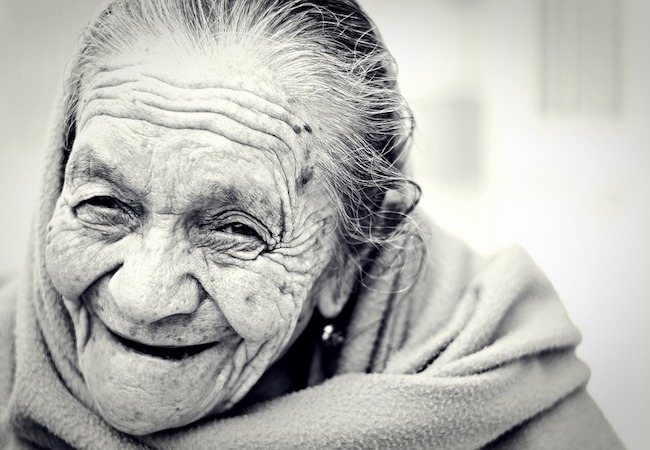
In 1980, the life expectancy in the U.S. was on par with other developed countries. However, since then, the Peterson-Kaiser health System Tracker states that many comparable countries have gained an average of 7.7 years in life expectancy, while the U.S. has only gained 4.9. Thus, the life expectancy in the U.S. is now significantly lower when compared to countries like Japan, Switzerland, Australia, Sweden, and more. In fact, in 2016, life expectancy for Americans actually declined for the very first time in 25 years. Today, U.S. life expectancy stands at 78.6 years, as opposed to the average of 82.2 years in other comparable countries.
These statistics are confusing and concerning, especially when one considers the rise in life expectancy is other countries. Additionally, there is no particular disease that this reduced life expectancy in the U.S. can be attributed to. On the contrary, developments in health science have taken new leaps in the last few years.
So what are some of the factors that go into life expectancy worldwide? Here, we will discuss three of the many factors that determine life expectancy; namely, quality of life, quality of healthcare, and the role (or lack thereof) of family in caregiving.
Quality of Life
It’s no secret that a healthy lifestyle can increase one’s life expectancy. Unfortunately, the quality of life in the United States is often synonymous with sedentary and unhealthy habits. Due to this, the body’s immunity decreases as one ages.
In turn, the body becomes less and less receptive to medicine, sometimes even shutting down rather than responding to medication. As stated on the Avacare Medical Blog, “In Western society, we often treat symptoms and acute conditions with medications and prescriptions when it comes to healthcare, instead of focusing on preventative medicine.” However, when the body stops responding to prescribed medication, there are few options left.
In this way, a holistic approach to healthcare that focuses on preventing ailments rather than curing them might be the key to extending life expectancy in the U.S. It is no coincidence that Japan, a country where life expectancy is higher than the average, is ranked the healthiest nation in Asia. Asian countries tend to follow healthier diets, contributing to a better overall quality of life. In Japan, for instance, a low-fat diet paired with a dietary philosophy called “hara hachi bu”contributes greatly to the high level of health of its population. Similarly, those who follow the Mediterranean diet in countries like Spain and Italy tend to have lower instances of major cardiovascular events.
On the other hand, the typical sedentary lifestyle and a diet high in sugar and “junk food” that is often associated with the U.S. are also leading causes of diabetes. In terms of quality of life, with health as a specific variable, the U.S. ranks 35th — lower than other comparable countries.
Quality of Healthcare Systems
The quality of healthcare systems around the world greatly affects life expectancy. A U.S. News article recently ranked the top 10 countries with the most well-developed public health care systems. Unfortunately, the United States didn’t make the list. Unsurprisingly, countries like Sweden, Germany and Switzerland — which all also rank high for life expectancy — were all in the top places.
While the U.S. is definitely making strides in terms of innovative healthcare advancements, these discoveries don’t seem to translate into everyday healthcare solutions. Despite the evolutions in health science, the gap between technology and its implementation leads to poor health for senior citizens. Secondly, much unlike Scandinavian countries, healthcare in the U.S. isn’t easily accessible for all and often is prohibitive when it comes to costs. However, the advent of telemedicine can hopefully help solve this problem.
Using platforms like texting, video calling, and more, telemedicine allows for healthcare to become more accessible, and tap into a wider pool of expertise. Individuals are able to get medical advice from the comfort of their homes, and quickly take action upon their healthcare professional’s instructions. Telemedicine is especially useful for those living in rural areas that are far removed from society — enabling them to get quick, efficient, and sometimes life-saving healthcare in a matter of minutes.
Family Units and Caregiving
In developed countries like the United States, families are growing smaller in size. In fact, a study by the Pew Research Center found that 71% of parents under 50 are unlikely to have more children in the future, with 37% of childless adults in the same group claiming to not want kids. The main reason is just that simple: people in this age group just don’t see as much value in having as many kids as the generations before them. In turn, this leads to a change in family unit size resulting in less familial care for the aged.
Caregiving for the aged is no easy feat, and can often lead to an increased risk of depression, financial difficulties, loss of job productivity and more for family members who choose to take care of aged members themselves. In countries like India, it is the norm to take care of one’s elders at home. However, in the United States, it is far more acceptable to send aged family members to external caregiving facilities. Both scenarios have their pros and cons, and can indirectly affect life expectancy.
For instance, in a family caregiving situation, seniors tend to lose the right to make their own decisions about their health – this control is usually given to the family members who act as caregivers. On the contrary, certain countries have strict laws in regards to how much control seniors have over their life choices, giving them the ability to control their affairs for as long as they are mentally able. In this case, it is important to take relevant steps for long term care planning. Without the right long term care, life expectancy can be unnecessarily reduced.
As more and more of the population ages, healthcare cannot stand to be ignored. While vaccines and other such measures share improved healthcare around the world, many battles still remain unfought. For instance, environmental issues are increasingly becoming a major cause of health problems that lead to decreased life expectancy. Those countries with lower life expectancies must look to others and emulate their actions, so as to safeguard the future of their populations. Today, more than ever, countries need to come together and work towards improving the quality of life and healthcare systems across the globe.








